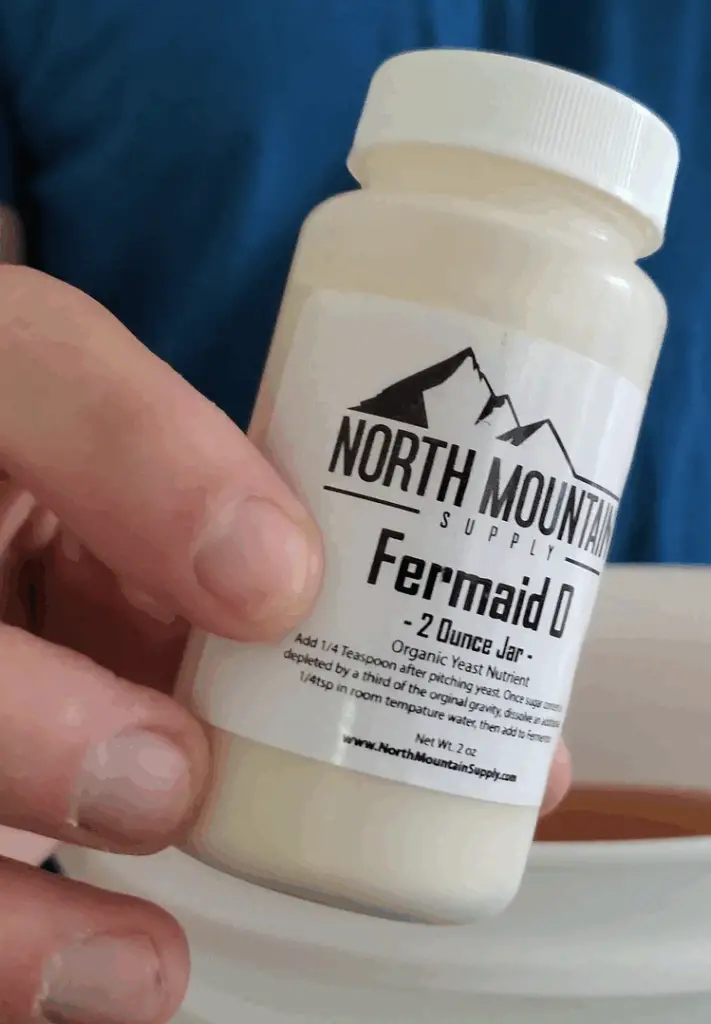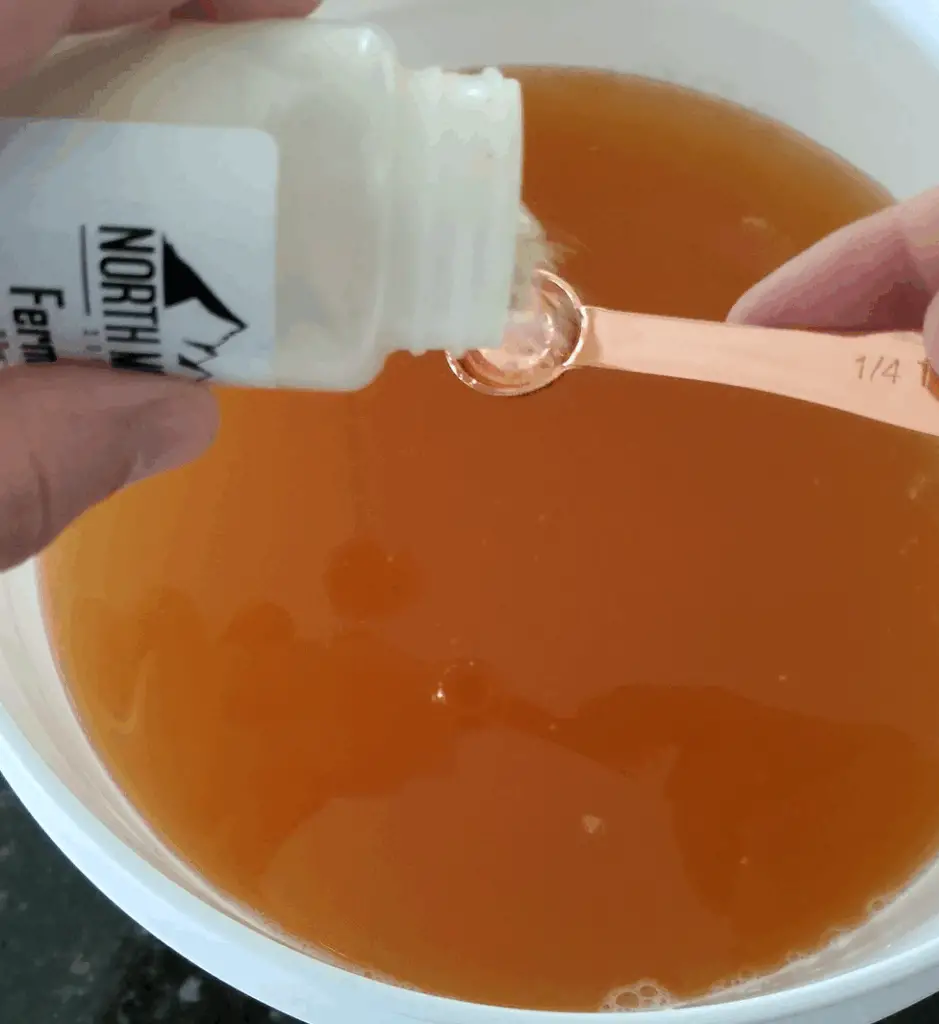If you spend any time on the homebrewing forums or subreddits, particularly /r/mead or /r/prisonhooch, you’ll see a lot of discussion about yeast nutrient. Specifically, you might actually get berated at the mere suggestion of brewing without yeast nutrient, as if it is a critical part of the brewing process. But do you really have to use it, or is it just an added expense?
Yeast nutrient is not actually required for fermented beverages like mead, wine, cider and beer. However, it is highly recommended. The addition of nutrient to your brew will result in happier, healthier yeast, leading to faster fermentation times and fewer off-flavors – and a much more enjoyable final product.
Despite what the gatekeepers of this hobby might lead you to believe, brewing up a batch of homemade alcohol without using yeast nutrient is not some horrific thing. You really can do it.
Even without yeast nutrient, for most standard batches of beer, wine, mead, cider, etc., your yeast will be able to consume the sugar and produce alcohol. Maybe not happily, but they’ll do it.
I even proved it in a recent video over on YouTube, where I made up a batch of simple wine from grocery store fruit juice and plain sugar. In that batch, I chose not to add nutrient – just to prove it can be done.
Not only did the yeast make wine, it actually turned out pretty decent.
But you really ought to add nutrient when you’re making homemade alcohol. At least… most of the time.
While it’s not 100% necessary, it is strongly recommended. Without nutrient, your yeast will be stressed and unhealthy, and they will struggle to ferment.
Fermentation will complete, but it will be slow and, depending on your recipe, could be prone to stalls or stuck ferments.
Stressed yeast will also produce a lot of extra fermentation by-products, which leave off-flavors in the brew. Unhealthy yeast will struggle to clean up these products, which means the batch may need a longer post-fermentation rest period and/or long aging times to become palatable.
In summary, the addition of yeast nutrient will result in faster fermentation and a better-tasting final product.
So Why Should You Add Yeast Nutrient?
While yeast can get by on sugar alone, they won’t do it very happily or healthily without a balanced diet of both macronutrients and micronutrients. Amino acids, vitamins and minerals.
Yeast are, biologically and metabolically, very simple versions of us. They have very similar nutrition needs to humans.
Think about it: while you could live on candy alone, you wouldn’t really thrive.
Without a balanced diet, you would be very unhealthy. You wouldn’t be able to do very much in your life – either physically or mentally! You’d have no energy, no ability to recover from any physical exertion, and no ability to focus on anything.
Yeast are the exact same!
The Science, Sort Of
But, basically, nutrients improve the health and metabolism of the yeast cells, allowing them to more efficiently and effectively ferment the sugar into alcohol.
Some macro- and micro-nutrients can help to improve the cell’s metabolic processes. This results in faster, more efficient fermentations.
It also makes the conversion of sugar into alcohol cleaner. The presence of certain nutrients allows the cell to more easily perform the conversion without producing unnecessary by-products (and thus off-flavors) as a result.

Additionally, many macro- and micro-nutrients improve the health of various cell organelles, most notably the cell wall.
With a strong and pliable cell wall, the cell can more easily uptake and process not only sugar, but also other nutrients and even the metabolic by-products that do get created.
This not only results in faster and more efficient fermentations, but also makes it easier for the yeast to clean up after itself when fermentation is done.
Thus, you end up with a shorter time resting or aging after primary fermentation before the batch is ready to drink!
In summary, using proper yeast nutrient for your brew results in faster fermentation, better attenuation, and fewer by-products, leading to a much better final product that’s ready to enjoy much sooner.
What Recipes and Products Should You Add Yeast Nutrient To?
There are very few instances where yeast nutrient is 100% required, and in certain cases (like with most beers) it doesn’t really add anything to the situation.
Most of the time, nutrient is a completely optional step, although it is recommended. As we’ve already discussed, your batch will typically ferment without it, although the addition of nutrient will result in a faster, cleaner fermentation that’s ready sooner with fewer by-products.
But there are certain cases where you do need it. With certain recipes and ingredients, if you don’t add the proper amount of nutrient in the right way, your yeast will struggle. Fermentation may not even begin, and if it does, it may stall or quit on you before it’s complete.
When Is It Truly Necessary to Use Yeast Nutrient?
It is very rarely truly necessary to use yeast nutrient, although there are a few (popular) cases where you really do need to.
Any batch that is incredibly stressful for the yeast will majorly benefit from added nutrient to help them along.
The most common example of this is any “big” or imperial beer, wine, mead, etc. although there are some other less-common examples such as the use of very low pH ingredients (e.g. cranberry juice).
To expand on the “big brew” example: when brewing high-alcohol batches, the yeast can struggle to continue metabolizing and fermenting after a while, when the alcohol content of the liquid is too high for them.
If the yeast’s tolerance is around 13%, it can be tough to produce a 13% batch – and even tougher to get it to ferment out to 15% or higher, as some brewers attempt to do!
On top of that, you have to consider osmotic pressure. Higher alcohol at the end requires a lot more sugar at the start – and in a very, very densely sugary environment, the yeast can struggle to even bring the sugar molecules through their cell walls!
In these cases, a stressed out yeast colony can crap out well before they’re done, leaving you with a stalled or stuck ferment. This means a very low attenuation, lower alcohol than you expected, and a very sweet and syrupy final product.
When a brewer tries to ferment a batch at (or past) the given yeast strain’s alcohol tolerance, it is important to use the proper amount of yeast nutrient!
Nutrient will help the yeast’s metabolism run more efficiently, to give the colony its best chance to keep going and finish the batch.
In these cases, it may be beneficial (or even necessary!) to use a more complicated yeast nutrient addition schedule rather than just front-loading the nutrient.
If you’re trying to make a really “big” (high-alcohol) batch, yeast nutrient may be just one special technique you’ll need to make it work!
There are cases where, with the right processes, the right yeast, and properly using yeast nutrient, brewers have been able to push way past the strain’s theoretical limit and produce batches with alcohol content even above 20%!
When Is It Truly Unnecessary to Use Yeast Nutrient?
With any standard recipe that’s almost entirely made from malted barley, yeast nutrient is not only optional, it’s completely unnecessary.
Wort made from malted barley provides an absolute abundance of nitrogen as well as nearly every other nutrient that healthy yeast needs.
Adding more nutrient won’t hurt the batch, but it doesn’t really add much to the equation, since there is already enough in the wort.
One caveat, as explained in the previous article, is that wort is often deficient in zinc. A simple zinc addition is all that you really need to consider when making most beers.
However, when using worts with a high ratio of adjuncts – corn, rice, wheat, rye – you’re indirectly providing less nutrient by using less malted barley. In this case, you may want to add some nutrient.
Additionally, as stated already, big imperial beers with a very dense wort may require a special nutrient addition schedule – even though there is plenty of nutrient in the wort!
How Should You Add Yeast Nutrient?
Well, this is a question with a lot of answers. The “best” way to add yeast nutrient to a batch is kind of up for debate, and you’ll see that debate play out if you ever spend any time on the brewing forums and subreddits!
There are a number of different ways to use nutrient, including “front-loading” (adding the entire amount of nutrient to the batch at once) and various “addition schedules” (where you add some nutrient at different stages of fermentation).
A full discussion on these options, what is best in what situation, and how to perform the various additions, calls for its own article (or maybe even series of articles) on the topic.

To quickly summarize, however: for most standard batches, you can probably get away with front-loading the nutrient by just adding the full amount at the same time you pitch your yeast.
Most commercial nutrient products, such as Fermaid-O, will suggest splitting it up, however. It’s often recommended to add some at the same time that you pitch the yeast, and then to add the rest partway through fermentation.
Then, of course, there are many variations of complex nutrient addition schedules.
Some very smart people have come up with extremely optimized yeast nutrient addition schedules, where you would add different amounts of nutrient (or even different nutrients) at different points during fermentation.
There’s a lot of science behind it.
The idea is partly to add just enough nutrient for the yeast to use it optimally, then add more when they run out and/or need it again.
Also, there’s some science that shows that different forms of nutrient are used by yeast most optimally at different points during fermentation (and that, sometimes, the yeast can’t even uptake certain kinds of nutrient at certain times).
“Staggered nutrient additions” or “nutrient addition schedules” are usually best for very nutrient-starved ferments – such as the high-alcohol batch example shown earlier.
For most ferments, a nutrient addition schedule could be used, but might be a bit overkill.
Personally, I tend to lean towards simplicity as much as possible – doing the lowest-effort method of nutrient additions and only adding complexity when a given recipe or batch calls for it.
Conclusion
So: do you have to use yeast nutrient for your fermentations? Usually, no.
But should you? Almost always, yes.
And sometimes, if you don’t, you may not get alcohol.



